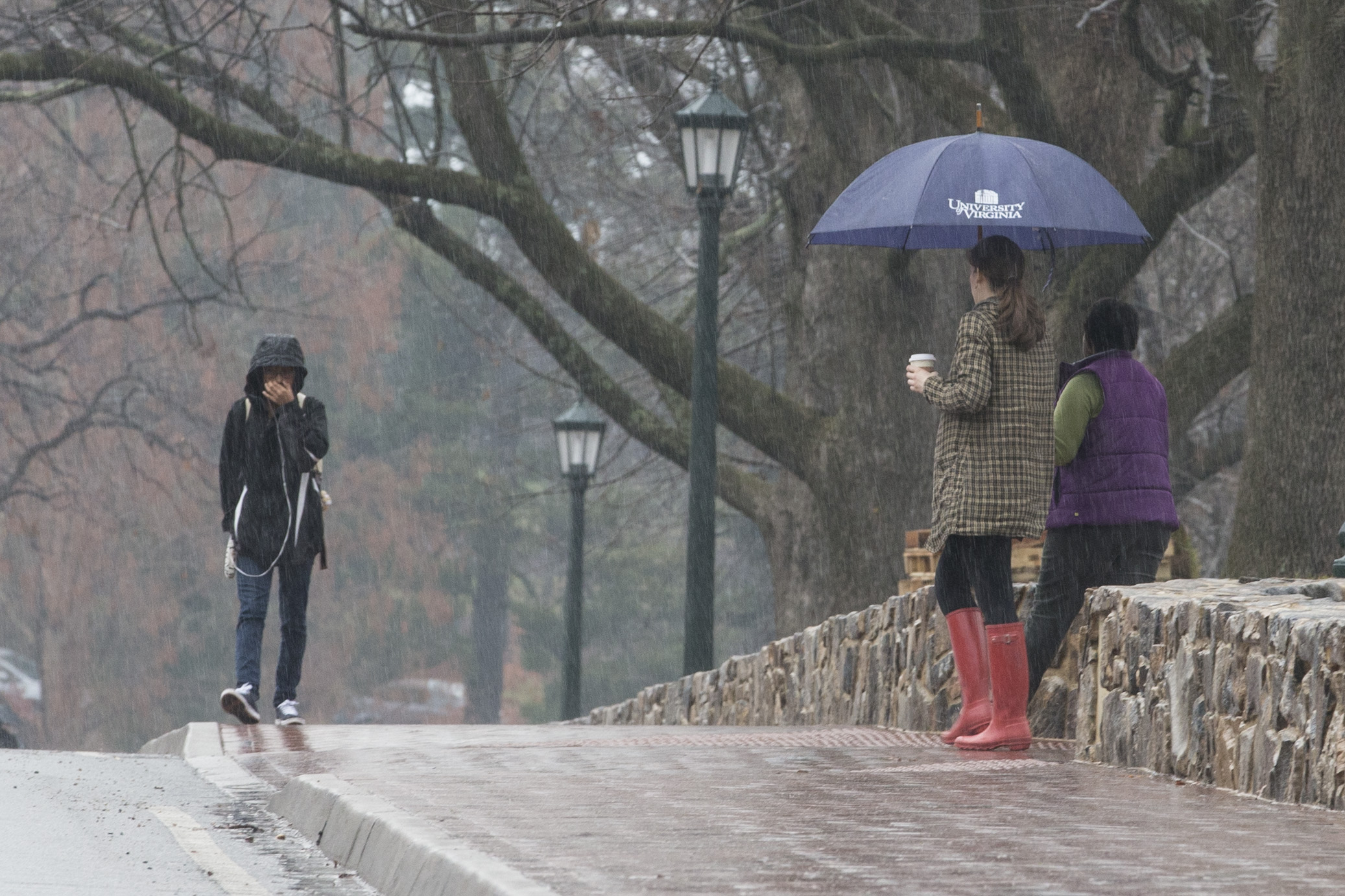Enough rain has fallen in Central Virginia in the first half of the year to begin to stabilize the water tables.
In the first half of the year, precipitation has been 130 percent of normal, with 28.96 inches measured at the McCormick Observatory, according to University of Virginia climatologist Phillip J. “Jerry” Stenger. In June alone, there were 9.15 inches of rain. (For record watchers, the wettest June in the 118 years of records at the McCormick Observatory came in 1903, when 15.2 inches of rain fell.)
While rainfall has been heavier than normal through the spring, it is only in the past month that the ground-water levels have begun approaching normal.
“There was not enough rain between October and May to make up for the previous deficit,” Stenger said. “There were some big storm events, but they produced a lot of runoff and the moisture did not have a chance to soak in.”
Rain that falls in the colder weather soaks more easily into the ground, finding its way into underground aquifers that trap water after it filters through soil and rock. But once the warm weather starts and the growing season begins, plants absorb much of the rain. Warmer weather also means more evaporation.
Stenger said some of the local ground water-monitoring wells are starting to run around average levels for this time of year, but he noted that the results are mixed.
“Some areas are above normal, but some areas are below normal,” he said, blaming local geological factors. “This is due to the underlying soil and rock layers. The levels are responding, but not universally in the same range.”
Ground-water levels are not just the concern of well owners. Reservoirs are recharged through ground water, not just from rain and watershed runoff.
“A reservoir is not a fixed container,” Stenger said. “If it still has water flowing over the dam, then it’s full. But normal rainfall is not enough to make up for evaporation.”
Despite a few days of seemingly oppressive heat, the year has been cooler than usual, Stenger said. On average, there are eight days in June where the temperature eclipses 90 degrees Fahrenheit, but this year there were only five. In fact, the month’s average high temperature of 82.5 degrees was the 10th-coolest June on record, tying with 1958, Stenger said.
“Normally, we would have had 14 days with temperatures higher than 90 so far this year; we have had only six,” he said. “Despite how hot and humid it has seemed, we are running lower than normal.”
He said that agricultural crops’ water demand varies from week to week. While surface crops, such as corn and hay, can absorb enough moisture from rain, fruit trees have deeper roots and rely greatly on ground water.
“The rain is good now for pasture and row crops,” Stenger said.
Stenger credits Tropical Storm Andrea for some of June’s rain.
“The wildcard here is the tropical storm season, which can bring a huge amount of moisture to the area quickly,” he said.
He said that forecasters are predicting a fairly active hurricane season, but there is no indication of how many storms will bring rain to the Virginia region, though he cautioned that this could lead to more runoff and flash flooding.
Media Contact
Article Information
July 11, 2013
/content/heavy-rains-finally-bringing-ground-water-back-normal-levels

